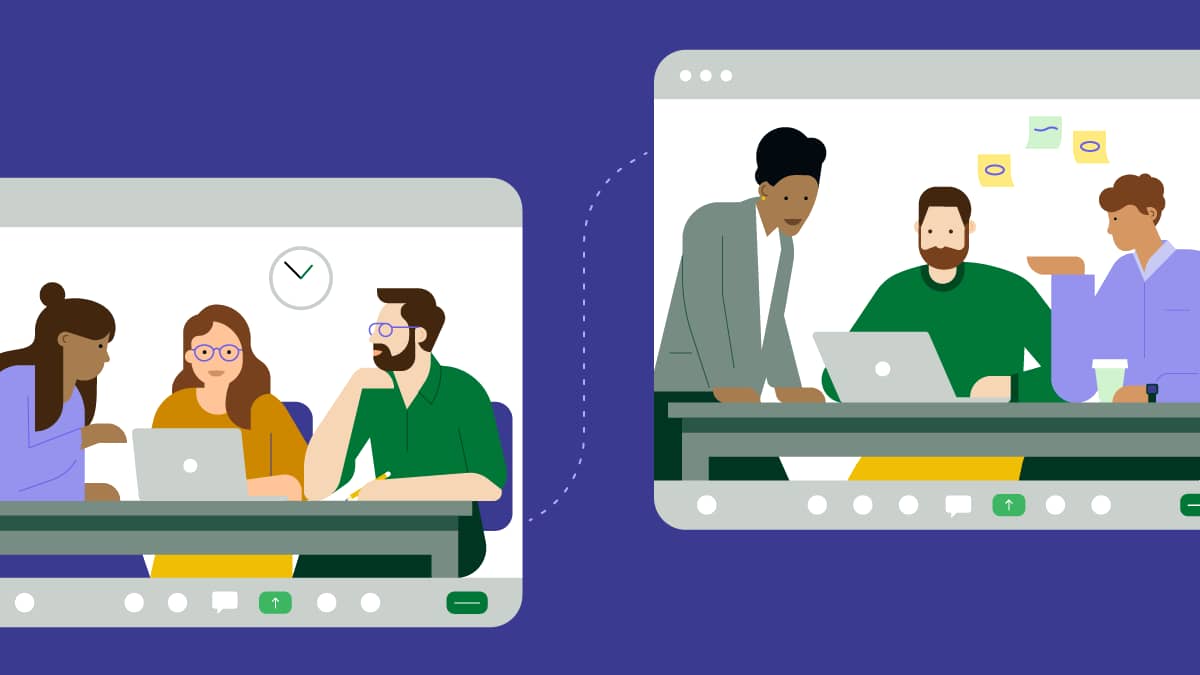At first glance, a balance sheet can look like a confusing jumble of complex numbers and terms. However, documenting your small business’s finances becomes easier to understand once you grasp the format and terminology.
In this post, you’ll learn how to read a balance sheet in simple terms and four steps to create one, giving you a clear picture of your company’s financial health.
What is a balance sheet and why do companies create them?
A balance sheet is a financial statement comprising three main sections: assets, liabilities and equity.
It’s a snapshot of a specific point in time that demonstrates:
What your business owns
What your business owes
How much shareholders have invested
Everything you own (assets) is either funded by what you owe (liabilities) or by investments (equity).
The term “balance” indicates that the two sides of this equation must always be equal:
Assets = liabilities + equity
A balance sheet – also known as a statement of financial position – helps small business owners and stakeholders:
Account for all resources to ensure compliance and transparent reporting
Understand a company’s current financial health compared to previous months or years
Make smarter decisions about investments, loans and growth strategies
Assess long-term stability and financial strength to attract investors
By regularly reviewing your balance sheet, you can make more informed decisions to spend your money in ways that drive growth.
You can also see how your company’s finances ebb and flow over time to identify trends and adjust strategies accordingly.
Free downloadable balance sheet template
Pipedrive’s free template helps you clearly outline your assets, liabilities and equity. Use it to understand and organize your business’s finances so you can make smarter strategic decisions.
Download your Balance Sheet Template
Download the template, enter your contact details and add your figures to create an accurate balance sheet.
How to read a balance sheet in simple terms (with an example)
While these financial documents may look complex, learning how balance sheets work is reasonably straightforward once you know the jargon. This section breaks down their layout and the most common terms in simple language.
A balance sheet should answer two questions for the reader:
Where has this money come from?
Where did this money go?
You can refer to the balance sheet example in the free Pipedrive template as you read through each section:

Assets
Assets on your balance sheet are things your company owns. You can have tangible (e.g., physical items) and intangible assets (e.g., data, copyrights and patents).
For example, a common intangible asset is “goodwill” – an estimation of your company’s purchase price minus the difference between the fair market values of your assets and liabilities.
There are two main types of assets shown on balance sheets:
Current assets. Things you can turn into cash or cash equivalents within a year.
Long-term/non-current assets. Things you’ll keep for more than a year.
Current assets include cash, inventory and money customers owe (accounts receivable).
Non-current company assets could be owned buildings, land and machinery (represented by “Property, plant and equipment” or “PP&E”) or long-term investments.
Note: “Less: accumulated depreciation” represents the value your assets lose over time due to wear and tear and their current worth.
In business, you need short- and long-term assets, with both tying up cash flow. For example, you may have short-term marketable securities (like stocks and bonds) and long-term prepaid expenses (e.g., future insurance or rent you’ve already paid for).
While you may be unable to access certain long-term assets, you can sell others off quickly if you need to free up money.
Your total assets represent the sum of everything your company owns that has value. Net assets are your total assets minus total liabilities.
Liabilities
Your company’s liabilities are things you owe other people or businesses (i.e., the amount of money you’ve borrowed from elsewhere).
Note: Borrowing or fundraising means you can start a business without cash. The downside is that you must pay it back even if you’re not making a profit.
There are two types of liabilities: current liabilities (bills you must pay within a year) and long-term/non-current liabilities (debts that will still be due after a year).
Current liabilities include:
Accounts payable. Money owed to suppliers.
Accrued expenses. Costs you’ve run up but haven’t paid yet (e.g., utility bills).
Deferred revenue. Money received for goods or services you haven’t delivered yet.
Mortgages, loans and money owed to creditors/bondholders (i.e., bonds payable) that will take years to pay off are long-term liabilities.
Certain types of company liabilities can also be current and non-current, depending on their due dates and when you must settle them. For example, tax liabilities depend on when you owe them.
Different depreciation methods (how your company spreads out the cost of big purchases over several years) can save taxes in the short term, but you’ll still owe them in the future.
“Deferred tax liabilities” arise when you postpone paying taxes, often because of differences in accounting and tax rules. While these long-term liabilities require future payments, deferred tax assets (if you’ve paid too much tax) are beneficial and suggest future savings.
Your total liabilities are all of the long-term debts and financial obligations your company owes to outside parties.
Shareholders’ equity
The shareholders’ – or stockholders’ – equity section shows what’s left over after you pay all your short- and long-term debts. The owners’ share of your business balances out the rest of your finances.
Let’s say you bought a store and still owe some money on it (a liability). However, the store is worth more than what you owe. The part you “own” free and clear is your equity.
Depending on your company’s structure, you may have to account for different types of owners’ equity.
Note: Owners’, shareholders’ and stockholders’ equity are interchangeable. “Owners” typically refers to individuals or partnerships, while the other terms apply to companies with divided shares.
Here are six typical forms of equity:
Common stock | Shares held by regular shareholders that show their ownership in the company |
Preferred stock | A type of stock that typically pays fixed dividends and gives shareholders priority over common stock in case of liquidation |
Retained earnings | The profits your company keeps (to grow or pay off debts) instead of paying them out as dividends |
Additional paid-in capital (APIC) | Extra money shareholders paid when they bought shares |
Treasury stock | Shares you buy back from shareholders to hold onto, sell or cancel |
Accumulated other comprehensive income (AOCI) | Gains and losses (e.g., foreign currency adjustments) that don’t appear in regular profit and loss statements |
Knowing the different types of shareholders mentioned above and their equity stakes is key to understanding your company’s ownership structure and its impact on financial decision-making.
Your total liabilities and stockholders’ equity is the combined amount of what you owe and what owners have invested. It should always equal your total assets on your balance sheet.
If you’ve only invested your own money into your business, your equity will show that full amount. Your total equity is also called your net worth.
4 steps to create your own balance sheet as a small business
Following these simple instructions, you can easily track your assets, liabilities and equity to clearly understand your small business’s financial standing.
Here’s how to create your balance sheet in four steps:
Step 1: gather financial information
Before creating your company’s balance sheet, you must collect data on all assets, liabilities and equity.
Accurate financial reporting helps you make more informed decisions. Gathering these metrics ensures your balance sheet reflects the actual state of your business.
Here are five essential data sources to start constructing your balance sheet:
Net income. Determine retained earnings and overall profitability using income statements.
Cash balances. Reflect your company’s liquidity (how easily you can convert your assets into cash) with cash flow statements.
Sales data. Assess sales revenue trends and outstanding sales invoices using customer relationship management (CRM) software like Pipedrive.
Inventory levels. Oversee current assets using an inventory management system.
Accounts payable and receivable reports. Capture outstanding obligations and amounts owed by customers.
Good bookkeeping means you’ll have most of the data you need to hand. It also ensures you’ll create error-free balance sheets that comprehensively overview your company’s financial position.
In addition to sales pipelines, you can use Pipedrive’s CRM system to monitor financial activities like sales and payments.
You can also integrate the tool with leading bookkeeping systems (e.g., Quickbooks and Paycove) to manage your sales and accounting information in one place.
Download your free sales invoice templates here
Step 2: stick to a preferred format
Next, pick a structured format and create your balance sheet manually (e.g., using a spreadsheet) or a digital tool (e.g., accounting software like QuickBooks or Xero).
Choosing a format is key for consistency. Looking back at a previous sheet in a different layout can make locating the information you need challenging.
Note: US-based public companies must format their balance sheets according to Generally Accepted Accounting Principles (GAAP) to ensure consistency and comparability.
There are three typical ways of formatting your balance sheet:
Account. Displays assets on the left and liabilities and equity on the right to compare both sides clearly – as in the free Pipedrive template.
Report. Lists assets, liabilities and equity in a single column for easy readability and a logical flow.
Comparative. Shows multiple periods of data side by side (e.g., Dec 2022 vs. Dec 2023) to analyze changes in financial position over time.
By selecting a preferred format and sticking to it, you’ll also simplify the process of updating and reviewing your balance sheets.
Step 3: list assets and liabilities
Now, list and total your current and non-current assets and liabilities. Correctly categorizing these elements is necessary to comply with accounting standards.
Say you’re a small company that sells HR software. Your assets and liabilities may include:
Asset examples | Liabilities examples |
|
|
All in, your current and non-current assets amount to $275,000, while your current and non-current liabilities amount to $77,000.
You can centralize this information by accurately listing and totaling these assets and liabilities to make better budgeting, investing and financial strategy decisions.
Step 4: calculate equity and check your balance sheet equation
Finally, calculate your company’s equity and check your sheet balances. This step is crucial to ensure your financial reporting is accurate.
You can measure equity using this basic accounting equation:
Equity = assets – liabilities
Let’s use the previous example numbers to calculate this. If your assets are $275,000 and your liabilities are $77,000, your equity would be $198,000.
Note: If you’ve manually totaled your equity and it amounts to more or less than this, this indicates an error in your calculations.
To check if your entire balance sheet is correct, you can use the formula:
Assets = liabilities + equity
It’s also important to include a date at the top of your balance sheet for reference. Clarifying when exactly you collected this financial data helps stakeholders assess your company’s current position compared to previous periods.
Final thoughts
A balance sheet is a critical tool for understanding your company’s finances. By following these steps, you’ll gain a clearer understanding of your financial health and be better equipped to plan for the future.
Remember, a balance sheet is only as accurate as your input data. Make sure you’re using systems and tools that calculate yours correctly.
To track your sales revenue data reliably and integrate with your favorite accounting tools, try out Pipedrive’s CRM free for 14 days.






